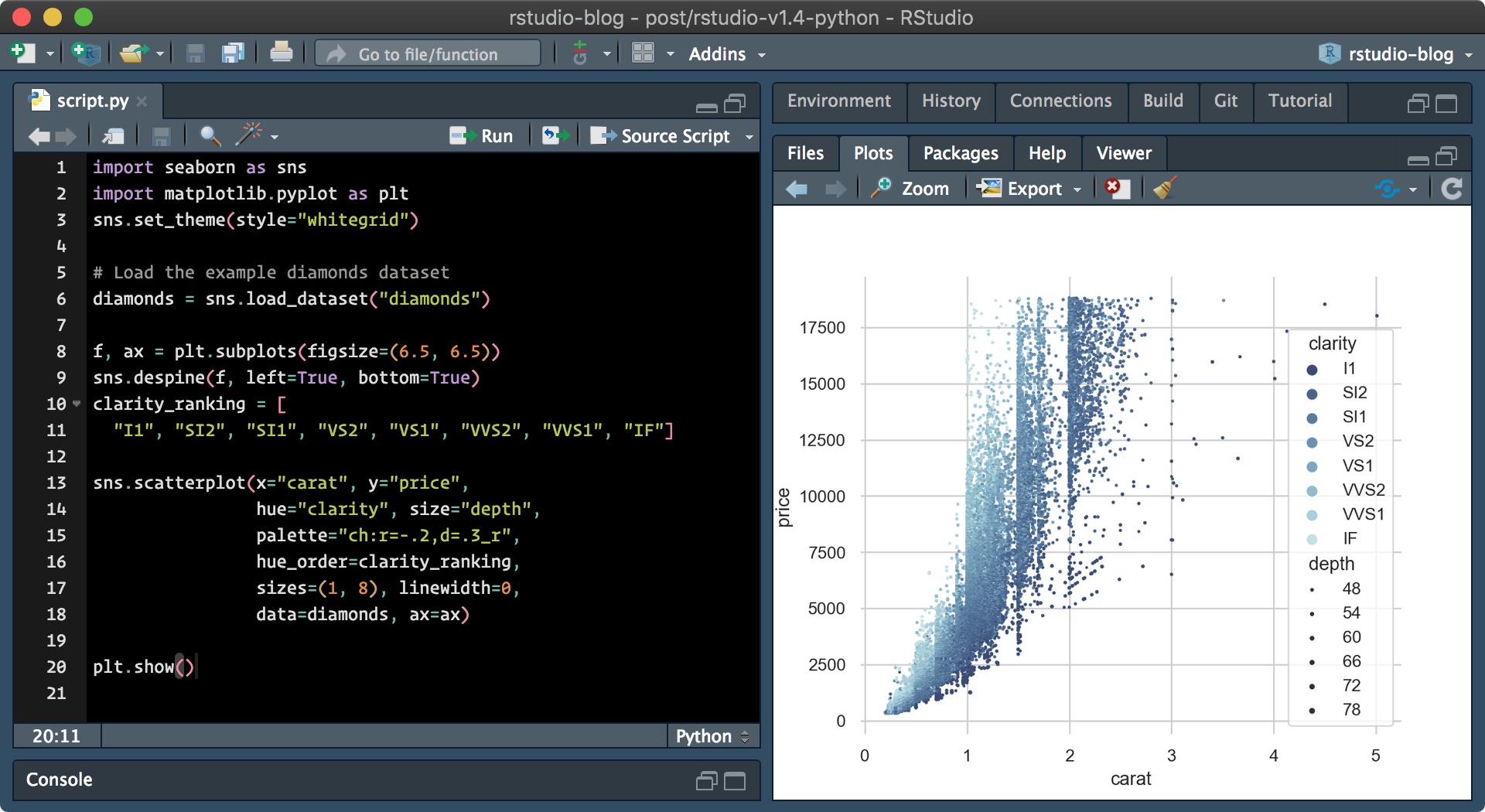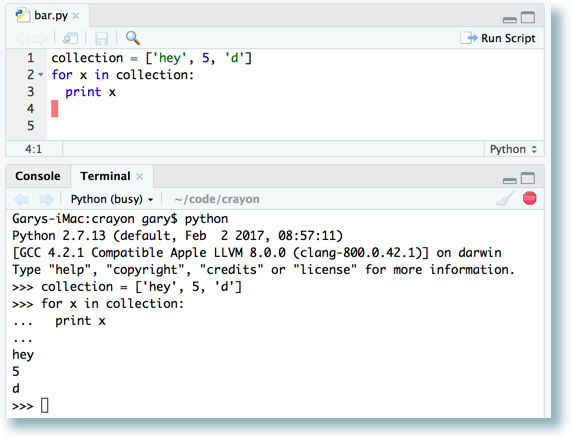

#R studio python install#
You can also download and install packages from a package repository (such as CRAN) with rpy2.įirst, select your desired mirror with utils.chooseCRANmirror() and install your packages with utils.install_packages(). Use importr() to load the utils and base packages, which normally come preinstalled with R.

Run the below, where you’ll also import the function data() for later. The rpy2 package provides a function () that mimics these steps. Installing and loading R packages are often the first steps in R scripts. Installing and loading R packages with rpy2 Import rpy2 packages and subpackages import rpy2įrom import image_png You may want to see ggplot2 objects in an output cell of a notebook.Run _printing() to enable this customization. rpy2 customizes the display of R objects, such as data frames in a notebook.There are a couple of other steps to make working in a notebook a bit easier: Running robjects also initializes R in the current Python process. Import the top-level subpackage robjects with import rpy2.robjects as robjects. Import the top-level rpy2 package by running import rpy2. Then, you’ll import the packages and subpackages. Run conda install r-ggplot2 in your Jupyter environment so that they show up. If you are working in a Jupyter notebook, you may want to see your ggplot2 plots within your notebook. If you’d like to see where you installed rpy2 on your machine, you can run python -m rpy2.situation. Once R is installed, install the rpy2 package by running pip install rpy2. You must have Python >=3.7 and R >= 4.0 installed to use rpy2 3.5.2.

Getting started with rpy2 Installing rpy2įirst up, install the necessary packages. Each section contains detailed steps, and you can find the complete script in the appendix.
#R studio python how to#
Users can move between languages and use the best of both programming languages.īelow, I walk you through how to call three powerful R packages from Python: stats, lme4, and ggplot2. rpy2 provides an interface that allows you to run R in Python processes. Thanks to the rpy2 package, Pythonistas can take advantage of the great work already done by the R community. Python has several well-written packages for statistics and data science, but CRAN, R’s central repository, contains thousands of packages implementing sophisticated statistical algorithms that have been field-tested over many years. This post on R Views is about… Python! Surprising, I know.


 0 kommentar(er)
0 kommentar(er)
